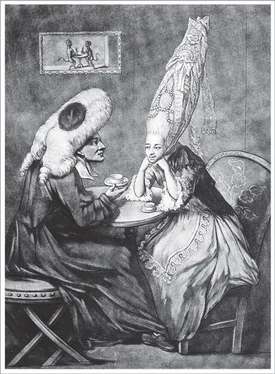Bill Bryson - At Home
Здесь есть возможность читать онлайн «Bill Bryson - At Home» весь текст электронной книги совершенно бесплатно (целиком полную версию без сокращений). В некоторых случаях можно слушать аудио, скачать через торрент в формате fb2 и присутствует краткое содержание. Жанр: Старинная литература, на английском языке. Описание произведения, (предисловие) а так же отзывы посетителей доступны на портале библиотеки ЛибКат.
- Название:At Home
- Автор:
- Жанр:
- Год:неизвестен
- ISBN:нет данных
- Рейтинг книги:4 / 5. Голосов: 1
-
Избранное:Добавить в избранное
- Отзывы:
-
Ваша оценка:
- 80
- 1
- 2
- 3
- 4
- 5
At Home: краткое содержание, описание и аннотация
Предлагаем к чтению аннотацию, описание, краткое содержание или предисловие (зависит от того, что написал сам автор книги «At Home»). Если вы не нашли необходимую информацию о книге — напишите в комментариях, мы постараемся отыскать её.
At Home — читать онлайн бесплатно полную книгу (весь текст) целиком
Ниже представлен текст книги, разбитый по страницам. Система сохранения места последней прочитанной страницы, позволяет с удобством читать онлайн бесплатно книгу «At Home», без необходимости каждый раз заново искать на чём Вы остановились. Поставьте закладку, и сможете в любой момент перейти на страницу, на которой закончили чтение.
Интервал:
Закладка:
Such is the Chippendale aura, however, that it needn’t even have been as close to him as that. In 1756 in colonial Boston, a furniture maker named John Welch, using a Chippendale pattern as a guide, made a mahogany desk that he sold to a man named Dublois. The desk stayed in the Dublois family for 250 years. In 2007, Dublois’s descendants put it up for auction with Sotheby’s in New York. Though Thomas Chippendale had no direct connection to it, it sold for just under $3.3 million.
Inspired by Chippendale’s success, other English furniture makers issued pattern books of their own. George Hepplewhite’s Cabinet-Maker and Upholsterer’s Guide was published in 1788, and Thomas Sheraton followed with the Cabinet-Maker and Upholsterer’s Drawing-Book , issued in installments between 1791 and 1794. Sheraton’s book had more than twice as many subscribers as Chippendale’s and was translated into German, a distinction not accorded Chippendale’s own volume. Hepplewhite and Sheraton became particularly popular in America.
Although any piece of furniture directly associated with any of the three is today worth a fortune, they were more admired than celebrated in their own lifetimes, and at times not even all that admired. Chippendale’s fortunes slipped first. He was an outstanding furniture maker but hopeless at running a business, a deficiency that became acutely evident upon the death of his business partner, James Rannie, in 1766. Rannie was the brains of the operation; without him, Chippendale lurched from crisis to crisis for the rest of his life. All this was painfully ironic, for as he struggled to pay his men and keep himself out of a debtor’s cell, Chippendale was producing items of the highest quality for some of England’s richest households, and working closely with the leading architects and designers—Robert Adam, James Wyatt, Sir William Chambers, and others. Yet his personal trajectory was relentlessly downward.
It was not an easy age in which to do business. Customers were routinely slow in paying. Chippendale had to threaten David Garrick, the actor and impresario, with legal action for chronic unpaid bills, and stopped work at Nostell Priory, a stately home in Yorkshire, when the debt there reached £6,838—a whopping liability. “I have not a single guinea to pay my men with tomorrow,” he wrote in despair at one point. It is clear that Chippendale spent much of his life in a froth of anxiety, scarcely for a moment enjoying any sense of security at all. At his death in 1779, his personal worth had sunk to just £28 2s 9d—not enough to buy a modest piece of ormolu from his own showrooms. The firm struggled on under the directorship of his son but finally succumbed to bankruptcy in 1804.
When Chippendale died, the world barely noticed. No obituary appeared in any paper. Fourteen years after his death, Sheraton wrote of Chippendale’s designs that “they are now wholly antiquated and laid aside.” By the late 1800s, Chippendale’s reputation had fallen so low that the first edition of the Dictionary of National Biography gave him just one paragraph—far less than it gave Sheraton or Hepplewhite—and much of that was critical and a good deal of it was wrong. The author was so little absorbed by the facts of Chippendale’s life that he had him coming from Worcestershire, not Yorkshire.
Sheraton (1751–1806) and Hepplewhite (1727?–1786) could hardly boast of magnificent success themselves. Hepplewhite’s shop was in a down-at-heel district, Cripplegate, and his identity sufficiently obscure that his contemporaries referred to him variously as Kepplewhite and Hebblethwaite. Almost nothing is known of his personal life. He had actually been dead for two years by the time his own book of patterns was published. Sheraton’s fate was even more curious. He seems never to have opened a shop, and no piece of furniture that can be attributed to him has ever been found. He may never have made any, but acted merely as a draftsman and designer. Though his book sold well, it appears not to have enriched him, for he had to supplement his income by teaching drawing and perspective. At some point he gave up furniture design, trained as a minister for a nonconformist sect known as the Narrow Baptists, and became essentially a street-corner preacher. He died in squalor, “among dirt and bugs,” in London in 1806, leaving a wife and two children.
As furniture makers, Chippendale and his contemporaries were masters without any doubt, but they enjoyed one special advantage that can never be replicated: the use of the finest furniture wood that has ever existed, a species of mahogany called Swietenia mahogani . Found only on parts of Cuba and Hispaniola (the island today shared by Haiti and the Dominican Republic) in the Caribbean, Swietenia mahogani has never been matched for richness, elegance, and utility. Such was the demand for it that it was entirely used up—irremediably extinct—within just fifty years of its discovery. Some two hundred other species of mahogany exist in the world, and most are very good woods, but they have nothing like the richness and smooth workability of the departed S. mahogani . The world may one day produce better chairmakers than Chippendale and his peers, but it will never produce finer chairs.
Curiously, no one at all appreciated this for the longest time. Many Chippendale chairs and other pieces, now considered priceless, spent a century or more being casually knocked about in the servants’ quarters before they were rediscovered and returned to the main house in the Edwardian era. Some six hundred pieces of Chippendale furniture have now been confirmed altogether. Others, handed down or disposed of in estate sales, could easily be sitting unregarded in some country cottage or suburban bungalow, more valuable than the houses that contain them.
III
If we were to go back in time to a house in Chippendale’s day, one difference that would immediately strike us would be that chairs and other items of furniture were generally pushed up against the walls, giving every room the aspect of a waiting room. Chairs or tables in the middle of the room would have looked as out of place to Georgians as a wardrobe left in the middle of a room would look to us today. (One reason for pushing them aside was to make it easier to walk through rooms without tripping over furniture in the dark.) Because they were kept against the wall, the backs of early upholstered chairs and settees were often left unfinished, just as we leave bare the backs of chests and wardrobes today.
When one had visitors, the custom was to bring an appropriate number of chairs forward and arrange them in a circle or semicircle, rather like storytime in an elementary school. This had the inevitable effect of making nearly all conversations strained and artificial. Horace Walpole, after sitting for four and a half hours in an agonizing circle of fatuous conversation, declared: “We wore out the Wind and the Weather, the Opera and the Play … and every topic that would do in a formal circle.” Yet when daring hostesses tried to introduce spontaneity by arranging chairs into more intimate clusters of threes and fours, many felt the result was tantamount to pandemonium, and more than a few could never get used to the idea of conversations taking place behind their backs.
The one problem with the chairs of the age was that they weren’t terribly comfortable. The obvious solution was to pad them, but that proved more difficult than one might have thought, because few craftsmen had all the skills necessary to make a good padded chair. Manufacturers struggled to get square edges where fabric met wood—piping and cording were originally brought in as a way of disguising these inadequacies—and were frequently out of their depth at producing padding that would maintain a permanent domed shape on the seat. Only saddlers could reliably provide the requisite durability, which is why so much early upholstered furniture was covered in leather. Fabric upholsterers also had the problem that many preindustrial fabrics could be produced only in widths of about twenty inches, creating a need for seams in awkward places. Only after the invention of the flying shuttle by John Kay in 1733 did it become possible to produce fabrics in widths of three feet or so.
Читать дальшеИнтервал:
Закладка:
Похожие книги на «At Home»
Представляем Вашему вниманию похожие книги на «At Home» списком для выбора. Мы отобрали схожую по названию и смыслу литературу в надежде предоставить читателям больше вариантов отыскать новые, интересные, ещё непрочитанные произведения.
Обсуждение, отзывы о книге «At Home» и просто собственные мнения читателей. Оставьте ваши комментарии, напишите, что Вы думаете о произведении, его смысле или главных героях. Укажите что конкретно понравилось, а что нет, и почему Вы так считаете.












